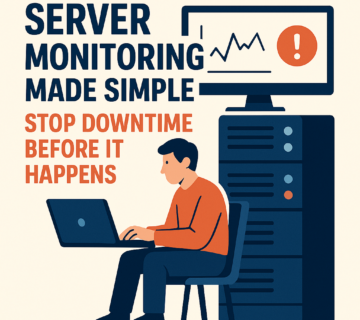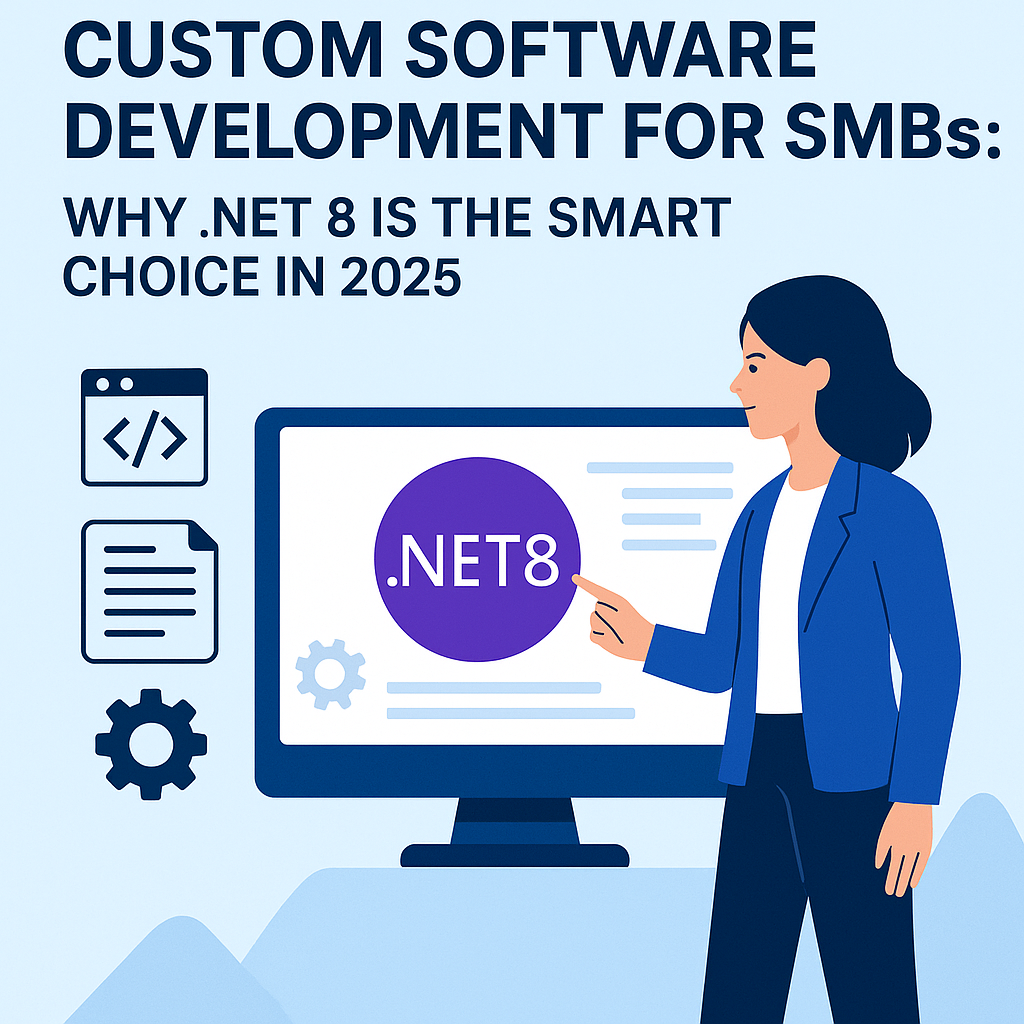Intel Shuts Down Clear Linux OS: End of a Decade-Long Journey in Open Source Computing
🎙️ Dive Deeper with Our Podcast!
Intel Shuts Down Clear Linux OS: End of a Decade-Long Journey in Open Source Computing
👉 Listen to the Episode: https://technijian.com/podcast/intel-shuts-down-clear-linux-os-end-of-a-decade-long-journey-in-open-source-computing/
After ten years of serving the open-source community, Intel has officially announced the discontinuation of its Clear Linux OS project. This decision marks a significant shift in Intel’s approach to Linux distribution development and leaves users scrambling for alternative solutions.
The Rise and Fall of Clear Linux OS
Clear Linux OS emerged as Intel’s ambitious attempt to create a performance-optimized Linux distribution specifically tailored for Intel hardware architecture. The project represented more than just another Linux flavor—it was a testament to Intel’s commitment to maximizing the potential of their silicon through software optimization.
The distribution distinguished itself through several innovative approaches. Rather than following traditional package management systems, Clear Linux implemented a unique bundle-based architecture that promised faster installations and streamlined system management. Every binary shipped with the distribution underwent compilation using specialized tuning flags designed exclusively for Intel processors, delivering performance benefits that standard distributions couldn’t match.
Technical Excellence That Set Clear Linux Apart
What made Clear Linux truly special was its relentless focus on performance optimization. The development team implemented aggressive compiler optimizations, kernel tuning, and system configurations that squeezed every ounce of performance from Intel hardware. This wasn’t merely about speed—the distribution also prioritized power efficiency, making it attractive for both high-performance computing scenarios and energy-conscious deployments.
The modular design philosophy meant that users could install only the components they needed, reducing system bloat and potential attack surfaces. This approach particularly appealed to developers working in containerized environments and cloud deployments where resource efficiency directly translated to cost savings.
Target Audience and Use Cases
Clear Linux OS carved out a specific niche within the Linux ecosystem. Software developers appreciated its cutting-edge toolchains and optimized development environments. Performance enthusiasts gravitated toward its benchmark-leading capabilities, while cloud and server administrators valued its minimal footprint and aggressive optimization strategies.
The distribution became particularly popular in high-performance computing environments, data centers running Intel architecture, and development workflows where compilation speed and runtime performance were critical factors.
The Shutdown Announcement
In a candid message posted to the Clear Linux forums, Intel’s development team delivered the news that many users had been dreading. The announcement was direct and unambiguous: effective immediately, Clear Linux OS would receive no further security patches, updates, or maintenance. The GitHub repositories would transition to read-only archive status, effectively ending active development.
This immediate cessation of support creates an urgent situation for current users. Without security patches, systems running Clear Linux will quickly become vulnerable to newly discovered exploits and security flaws. The development team strongly emphasized the critical importance of migrating to actively maintained distributions as quickly as possible.
Understanding the Business Decision
While Intel hasn’t provided detailed explanations for the shutdown, industry observers can identify several likely factors that contributed to this decision. The most obvious challenge was user adoption—despite its technical excellence, Clear Linux never achieved the widespread adoption necessary to justify its substantial development costs.
Maintaining a Linux distribution from scratch requires enormous engineering resources. Unlike distributions that build upon existing foundations like Debian or Red Hat, Clear Linux’s unique architecture demanded continuous investment in core system components, package management infrastructure, and user support systems.
Intel’s recent strategic pivots also likely influenced this decision. The company has been increasingly focused on artificial intelligence, particularly agentic AI technologies, while simultaneously streamlining operations to reduce costs and complexity. Niche projects like Clear Linux, regardless of their technical merit, may not align with these new strategic priorities.
Migration Challenges and Opportunities
Current Clear Linux users face immediate migration challenges. The distribution’s unique package management system and optimization approaches mean that transitioning to alternative distributions isn’t simply a matter of copying files and configurations. Users must carefully evaluate their requirements and select distributions that can provide similar performance characteristics while maintaining compatibility with their existing workflows.
Popular migration targets include Ubuntu for its broad hardware support and extensive documentation, Fedora for its cutting-edge features and robust community, and openSUSE for its enterprise-grade stability. Performance-focused users might consider Gentoo, which offers similar optimization possibilities through its source-based package management, though with significantly increased complexity.
Intel’s Continued Commitment to Linux Optimization
Despite discontinuing Clear Linux OS, Intel has assured the community that their commitment to Linux ecosystem optimization remains strong. The company plans to continue developing and contributing hardware-specific optimizations that can benefit other distributions and open-source projects.
This approach actually makes considerable business sense. Rather than maintaining an entire distribution, Intel can focus their engineering efforts on creating optimization libraries, kernel patches, and development tools that can be integrated into existing, well-supported distributions. This strategy maximizes the impact of their optimization work while reducing maintenance overhead.
Lessons for the Open Source Community
The Clear Linux shutdown offers valuable insights into the challenges of maintaining specialized Linux distributions. Technical excellence alone isn’t sufficient for long-term sustainability—distributions need substantial user communities, developer ecosystems, and clear value propositions that justify their existence alongside established alternatives.
The experience also highlights the importance of considering maintenance burden during the design phase. While Clear Linux’s from-scratch approach enabled unique optimizations, it also created ongoing support obligations that ultimately proved unsustainable given the user base size.
Security Implications and Urgent Actions Required
The immediate security implications of Clear Linux’s shutdown cannot be overstated. Systems running the distribution will not receive security updates for newly discovered vulnerabilities, creating expanding attack surfaces over time. Organizations using Clear Linux in production environments face particularly urgent migration requirements.
Security professionals recommend treating Clear Linux systems as compromised infrastructure that requires immediate replacement or isolation. The window for safe operation is rapidly closing as security researchers continue discovering new vulnerabilities that will never be patched in Clear Linux.
Performance Considerations for Migration Planning
Organizations that chose Clear Linux for its performance characteristics face the challenge of maintaining similar optimization levels after migration. While no other distribution offers identical performance tuning, several strategies can help minimize performance regression during the transition.
Gentoo provides the closest equivalent through its source-based compilation with custom optimization flags. However, this approach requires significantly more technical expertise and maintenance overhead. Ubuntu and Fedora offer Intel-optimized packages that provide some performance benefits, though not at Clear Linux levels.
Custom kernel compilation and optimization can help bridge performance gaps, but organizations must weigh these benefits against increased maintenance complexity and support challenges.
The Future of Intel-Optimized Linux Computing
Intel’s decision to discontinue Clear Linux doesn’t signal an end to Intel-optimized Linux computing. Instead, it represents an evolution toward more sustainable optimization strategies that benefit the broader Linux ecosystem rather than requiring specialized distributions.
Future Intel optimization efforts will likely focus on upstream contributions to major distributions, development of optimization libraries that can be integrated into existing package managers, and collaboration with distribution maintainers to incorporate Intel-specific tuning into standard release processes.
Frequently Asked Questions
Q: How long do I have to migrate from Clear Linux OS? A: Intel recommends migrating immediately. Since security updates have already stopped, every day you continue using Clear Linux increases your security risk. Plan for migration within the next 30 days maximum.
Q: Which Linux distribution provides the closest performance to Clear Linux? A: No single distribution matches Clear Linux’s performance exactly, but Gentoo with custom optimization flags comes closest. Ubuntu and Fedora with Intel-optimized packages offer good performance with less complexity.
Q: Can I continue using Clear Linux safely in isolated environments? A: Even in isolated environments, Clear Linux poses increasing security risks as new vulnerabilities are discovered but never patched. Migration is strongly recommended regardless of network isolation.
Q: Will Intel provide any migration tools or assistance? A: Intel hasn’t announced specific migration tools, but they’ve committed to continuing Linux ecosystem contributions that will benefit other distributions.
Q: What happens to my custom Clear Linux configurations and optimizations? A: You’ll need to manually recreate optimizations on your new distribution. Document your current configurations before migration to ease the transition process.
Q: Are there any commercial support options for Clear Linux going forward? A: No, Intel has completely discontinued support. No third-party commercial support options are available or recommended.
Q: How does this affect Intel’s commitment to open source software? A: Intel remains committed to open source contributions but is focusing efforts on upstream contributions to existing distributions rather than maintaining their own distribution.
Q: Can the Clear Linux community fork the project and continue development? A: While technically possible since the code remains available, the complexity of maintaining a Linux distribution from scratch makes a successful community fork extremely unlikely.
How Technician Can Help Navigate Your Clear Linux Migration
Facing the urgent need to migrate from Clear Linux OS can feel overwhelming, especially when considering performance requirements, security implications, and operational continuity. This is where professional technical assistance becomes invaluable.
Technician specialists understand the unique characteristics that made Clear Linux attractive to your organization and can help identify alternative distributions that best match your specific requirements. Rather than attempting a hasty migration that might compromise performance or introduce compatibility issues, working with experienced professionals ensures a smooth transition that maintains your operational capabilities.
Our migration assessment process begins with a comprehensive analysis of your current Clear Linux deployment, identifying critical performance optimizations, custom configurations, and application dependencies. This foundation enables the development of a targeted migration strategy that preserves essential functionality while enhancing long-term maintainability.
The migration planning phase involves selecting the optimal target distribution based on your performance requirements, security needs, and operational constraints. Whether you need the cutting-edge features of Fedora, the stability of Ubuntu LTS, or the optimization flexibility of Gentoo, technician experts can guide this critical decision and prepare detailed implementation roadmaps.
During the actual migration process, technician support ensures minimal downtime and maximum compatibility preservation. This includes configuration migration, performance optimization implementation, and comprehensive testing to verify that your new environment meets or exceeds your previous Clear Linux performance levels.
Post-migration support helps your team adapt to new distribution-specific tools and maintenance procedures while implementing ongoing optimization strategies that leverage Intel hardware capabilities within your chosen distribution framework.
Don’t let the Clear Linux shutdown disrupt your operations or compromise your security posture. Contact technician professionals today to begin your migration planning and ensure a successful transition to a sustainable, high-performance Linux environment that serves your organization’s needs for years to come.
About Technijian
Technijian is a premier managed IT services provider, committed to delivering innovative technology solutions that empower businesses across Southern California. Headquartered in Irvine, we offer robust IT support and comprehensive managed IT services tailored to meet the unique needs of organizations of all sizes. Our expertise spans key cities like Aliso Viejo, Anaheim, Brea, Buena Park, Costa Mesa, Cypress, Dana Point, Fountain Valley, Fullerton, Garden Grove, and many more. Our focus is on creating secure, scalable, and streamlined IT environments that drive operational success.
As a trusted IT partner, we prioritize aligning technology with business objectives through personalized IT consulting services. Our extensive expertise covers IT infrastructure management, IT outsourcing, and proactive cybersecurity solutions. From managed IT services in Anaheim to dynamic IT support in Laguna Beach, Mission Viejo, and San Clemente, we work tirelessly to ensure our clients can focus on business growth while we manage their technology needs efficiently.
At Technijian, we provide a suite of flexible IT solutions designed to enhance performance, protect sensitive data, and strengthen cybersecurity. Our services include cloud computing, network management, IT systems management, and disaster recovery planning. We extend our dedicated support across Orange, Rancho Santa Margarita, Santa Ana, and Westminster, ensuring businesses stay adaptable and future-ready in a rapidly evolving digital landscape.
Our proactive approach to IT management also includes help desk support, cybersecurity services, and customized IT consulting for a wide range of industries. We proudly serve businesses in Laguna Hills, Newport Beach, Tustin, Huntington Beach, and Yorba Linda. Our expertise in IT infrastructure services, cloud solutions, and system management makes us the go-to technology partner for businesses seeking reliability and growth.
Partnering with Technijian means gaining a strategic ally dedicated to optimizing your IT infrastructure. Experience the Technijian Advantage with our innovative IT support services, expert IT consulting, and reliable managed IT services in Irvine. We proudly serve clients across Irvine, Orange County, and the wider Southern California region, helping businesses stay secure, efficient, and competitive in today’s digital-first world.


